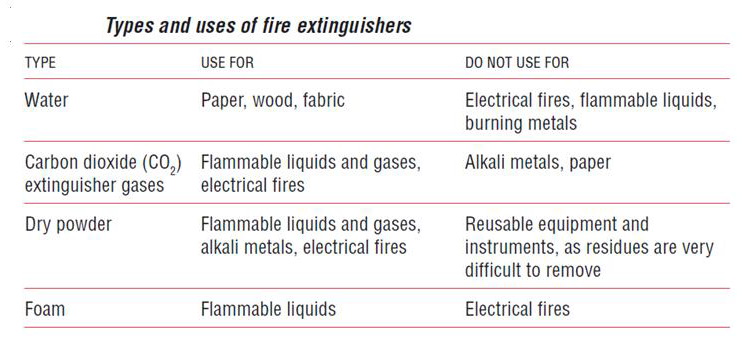The following practices may reduce risk of injury or fire when working with electrical equipment:
- Avoid contact with energized electrical circuits.
- Use guarding around exposed circuits and sources of live electricity.
- Disconnect the power source before servicing or repairing electrical equipment.
- When it is necessary to handle equipment that is plugged in, be sure hands are dry and, when possible, wear non-conductive gloves and shoes with insulated soles.
- If it is safe to do so, work with only one hand, keeping the other hand at your side or in your pocket, away from all conductive material. This precaution reduces the likelihood of accidents that result in current passing through the chest cavity.
- Minimize the use of electrical equipment in cold rooms or other areas where condensation is likely. If equipment must be used in such areas, mount the equipment on a wall or vertical panel.
- If water or a chemical is spilled onto equipment, shut off power at the main switch or circuit breaker and unplug the equipment.
- If an individual comes in contact with a live electrical conductor, do not touch the equipment, cord or person. Disconnect the power source from the circuit breaker or pull out the plug using a leather belt.
Altering Building Wiring and Utilities
Repairs of high voltage or high current equipment should be performed only by trained electricians. Laboratory workers who are experienced in such tasks and would like to perform such work on their own laboratory equipment must first receive specialized electrical safety related work practices training by EHS staff. Contact the Facility Office
Any modifications to existing electrical service in a laboratory or building must be completed or approved by either the building facility manager, an engineer from the Facilities department or the building’s Special Facilities staff. All modifications must meet both safety standards and Facilities Engineering design requirements.
Any unapproved laboratory facilities modifications discovered during laboratory surveys or other activities are reviewed by EHS and facility staff to determine whether they meet design specifications.
Close cooperation between safety officers and local fire prevention officers from Facility Dept. in Alfaisal University is essential.
Apart from chemical hazards, the effects of fire on the possible dissemination of infectious material must be considered. This may determine whether it is best to extinguish or contain the fire.
The assistance of local fire prevention officers in the training of laboratory staff in fire prevention, immediate action in case of fire and the use of fire-fighting equipment is desirable.
Fire warnings, instructions and escape routes should be displayed prominently in each room and in corridors and hallways.
Common causes of fires in laboratories are:
- Electrical circuit overloading
- Poor electrical maintenance, e.g. poor and perished insulation on cables
- Excessively long gas tubing or long electrical leads
- Equipment unnecessarily left switched on
- Equipment that was not designed for a laboratory environment
- Open flames
- Deteriorated gas tubing
- Improper handling and storage of flammable or explosive materials
- Improper segregation of incompatible chemicals
- Sparking equipment near flammable substances and vapours
- Improper or inadequate ventilation.
Fire-fighting equipment should be placed near room doors and at strategic points in corridors and hallways. This equipment may include hoses, buckets (of water or sand) and a fire extinguisher. Fire extinguishers should be regularly inspected and maintained, and their shelf-life kept up to date. Specific types and uses of fire extinguishers are shown in attached table:
